

| My pages about the area around Lake Mälaren |
| My travel stories | My photo impressions | ||
| Anundshög | Stingsmossen | ||
| Eskilstuna | Strängnäs | ||
| Fiholm | Sundbyholm | ||
| Gripsholm | Västerås | ||
| Häljesta Rock Carvings | Vallby Open Air Museum | ||
| Mariefred | Örebro | ||
| Sigurdsristningen |

I guess it is time that I write a bit more about 'my' area of Sweden: the area around Lake Mälaren! Mälaren is the third largest lake in Sweden and it also the area that I now call my home. I have been living here for approximately 15 years; to be exact, from the first day that I moved to Sweden. And Sundbyholm is the place that I call my home.
All the photos in the collage below are clickable, so you can view the larger photo.
Impressions of Sundbyholm
Sweden

Sunset over Lake Mälaren
This is going to be a page with an impression about the place where I live: Sundbyholm, at the shores of Lake Mälaren.
I write a lot about my travels, but I guess, never so much about the place where I live. Sundbyholm is not a town, not even a village, I guess one would call it a small community. A gathering of mostly wooden houses, in a beautiful natural environment. There is not much to do here, and then again, there is in a way. There is the Sundbyholm Castle, and the famous Sigurdsristningen (one of Sweden's most famous Viking Monuments). The little harbour, and a beach on the lake side. And we have Europe’s northernmost beech forests, a place which I especially love during spring and autumn. But most of all, this is for me my 'home', a place where I love to live. The place where I like to potter around in my garden with its many flowers and the place where I relax.
What I like to do most here is to walk around in the area, through the Nature Reserve, and beyond. And once in a while I grab my camera and take some photos during these walks. This page will show you the images I take during these numerous walks, in all season of the year. From the crisp cold snowy days in winter, to the explosion of green and wild flowers in spring. The amazing sunsets in early summer, and the shortening days when the trees start to drop their leaves in the autumn.
Please let me present to you Sundbyholm and its surrounding and join me during my walk, and see my place through my images.

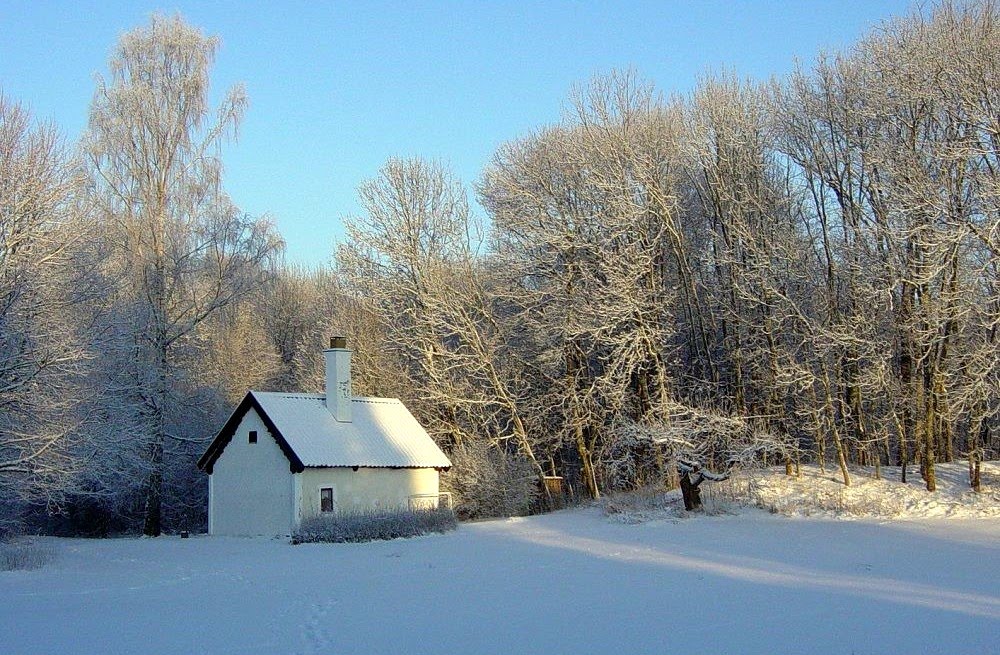
Tegelslagarstugan, the nuances of white of winter
The "Tegelslagarstugan" is a little cottage just 5 minutes walk from my home. The name means "brick-makers cottage", and this is where the brick-maker for the castle used to live. It is such a tiny place, hugging the edge of the woods, not really in use anymore. But for me it oozes character. Many of my walks pass the Tegelslagarstugan, and there is no place that shows the changes of the seasons better. The house dates back to the 17th century. Many of the big estates during those times had a little brickmakers cottage like this on their property. The castle was build between 1639 and 1648.
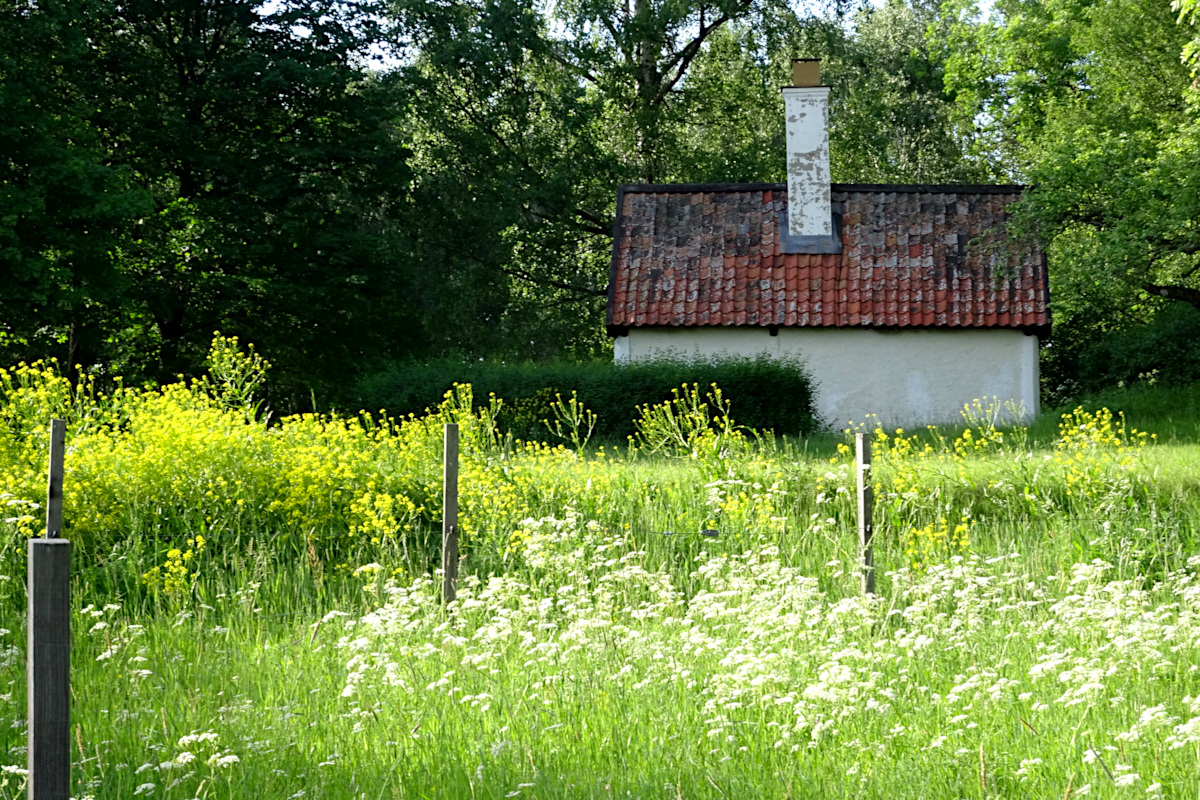
Tegelslagarstugan surrounded by the vibrant colours of spring
Tegelslagarstugan, the warm colours of autumn

A beautiful autumn day in front of the castle
The shortening days when the trees start to drop their leaves: autumn has arrived in Sundbyholm. The real change of feel from summer to autumn starts around the middle of September. There is a chill in the air that previously wasn't here. And when autumn progresses the trees start to change colour in various shades of red, yellow, orange, and brown. Mushrooms are popping up their heads and you will see people going out picking mushrooms (a real Swedish tradition); most of all the chanterelle.
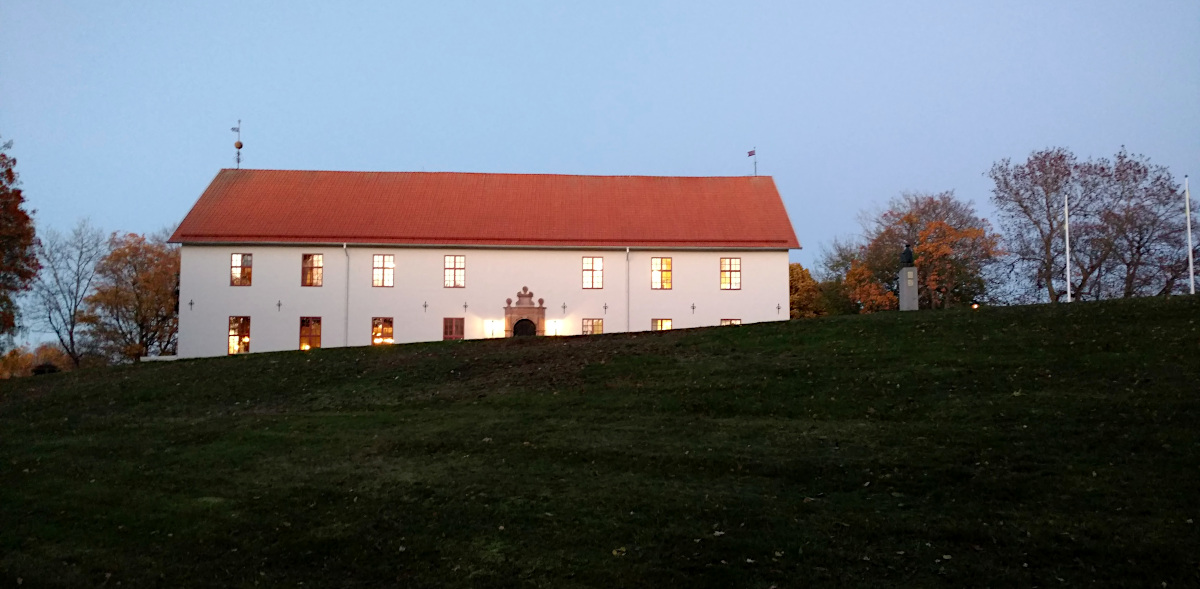
A late afternoon walk in October, passing Sundbyholm Castle
The road to Sundbyholm Slott in autumn
The autumn is the time of year that we do spot a fox from time to time. We hardly ever see them during any other time of the year. And come to think of it, we actually saw one in our garden yesterday afternoon! They are not shy though, and on occassion they walk up onto our deck and pass by our living room windows and door.
Animals that you can easily spot here are the deer, there are plenty of those! I see them walk around here often, and far too often in my garden (they do loooove eating my tulips, and I guess my appels as well). They appear mostly late autumn, through winter and into early spring. I still like them though, even if they eat the tulips. Especially if they have their young with them, frollicing around in my backyard, so cute to watch! And with that I should add a word of warning, as they also cross the road to Sundbyholm, and with that can cause car accidents.
If you are really really lucky, you could spot a moose. But that is rare. Only once, as we aware of, there was a moose in our garden. Birds are plenty here too, especially in the nature reserve. And at the waters edge at the castle there are quite a few woodpeckers. Not always so easy to spot, but you can hear them quite often. During winters they seem to like to drop by in my garden in search for some bird seeds.
The toxic mushroom Amanita muscaria
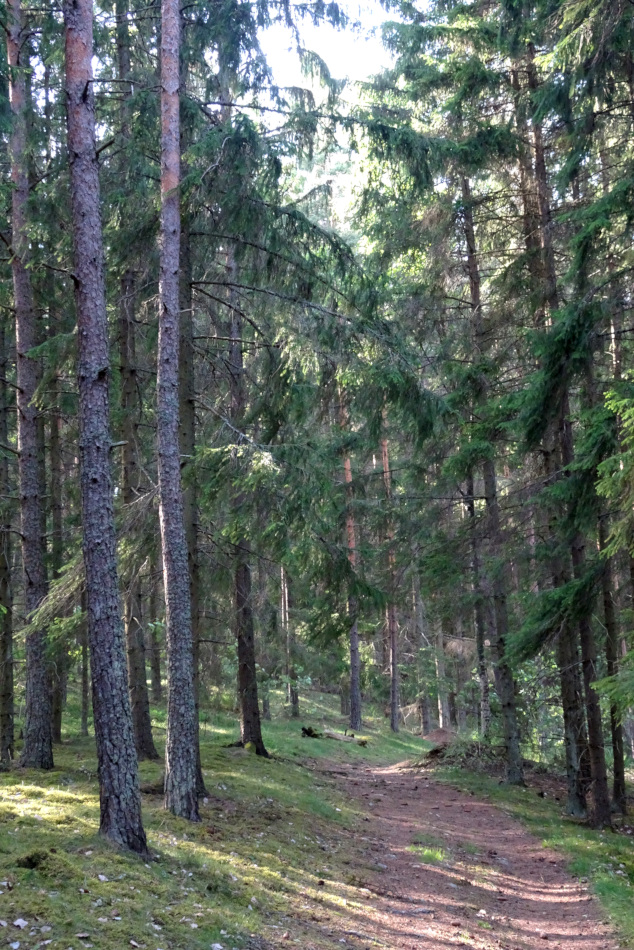
hiking trail on the ridge
The area around Sundbyholm has a nice variation landscape, and even a relatively short walk will make you able to go through different types of nature. Of course you have the Lake Mälaren, with its views over the blue water and small islands dotted in the lake. Part of the Nature reserve has pastures that are maintained in the original historic tradition of farming. They are filled with wild flowers in spring, have several bushes and fruit trees dotted in the fields, and cows graze during late summer in the meadow to keep the long grass down. Around the castle there are lanes with beech forest, which is quite exotic for this area, as these normally do not grow so far north. And you can climb on the high ridge and follow the hiking trail on top of the ridge through of mixed forest of pine and leaves.
Europe’s northernmost beech forests during early winter

Sun setting during the afternoon on Christmas Day
Prins Eugén painting Sundbyholm Slott
Winter has arrived, and the days get very short. The sun goes up late in the day and goes down already around 3 o'clock in the afternoon. The temperatures go down to freezing, and the chance for really low temperatures and snow increase from Christmas and especially during January and February. Temperatures of -20C are not unusual for the area, but mostly the thermometer stays around -5C. But on a cold crisp day, with blue skies and a sunshine shining brightly, it is such a joy to be outside, despite the cold! Taking a nice walk to the lake and the castle, hearing the snow crunching and squeaking under my feet and seeing the sunlight reflect in the thousands of tiny cristals of the snow is unresistable. And these types of days are rare, but unforgettable as they bring such joy in the darkness of the long winter days.
In the photo above you can see the sculpture in front of Sundbyholm Castle called 'Prinsen' after Prins Eugén (1865 – 1947). Prins Eugén made a painting of the castle in 1893 called the ‘Det Gamla Slottet’, which means 'the Old Castle'. Prins Eugén was son of King Oscar II. This sculpture made by Sven Lundqvist in 2003, 110 years after the painting was made.
Sundbyholm castle
Frost on red berries
Frozen in ice
birch trees
Frozen Lake Mälaren

Our Christmas Cat
Bringing light into the darkness
January: the days are short, the evenings are long. The sun is setting around 3 in the afternoon and doesn't show its face again before 9 in the morning. So it is best to make the best of the evening as you can, and what better way than to bring some light into the darkness.
During the long winter evenings we often burn a candle outside on the deck, using our home made candle holders. Yep, you see it correctly, they are made of ice! It gives a wonderful effect, these icy candle holders, and they are sooo easy to make. The easiest way to do it is by simply putting a bucket of water outside for the night. The temperatures here are cold enough to freeze the outer rim of water in the bucket within 24 hours (if it is not that cold, it might take a few days). This is not enough time to freeze the whole content in the bucket, only the outer rim (which is the meaning). Just turn the ice form out of the bucket when the outer rim is frozen, and it instantly forms into excellent rustic candle holders. Perfect for outside on the deck, bringing light and instant coziness during the dark long Swedish evenings.
It is always fun to see how they turn out, as they are never really the same. The ice candles in the photos above are all done with the 'bucket' method. But you can easily fancy it up a bit by putting decorations in the water, e.g. flowers or branches from a christmas tree, but then you need 2 buckets (double boiler method) to keep your decorations in place in the outer rim.
The lane towards the castle bordered by beeches, planted at the end of the 18th century.
Sundby church
Rune stone in the outer wall of Sundby church
Around 1100 they started building stone churches in Södermanland, and the Sundby church is one of those (photo above right). It is known that in 1686 the original church from 1100 was still there, but it was rebuilt around the 1790s. In 1996 the church was completely renovated. Unfortunately the church is hardly used these days, and is closed almost all the time. So taking a look inside is difficult.
The church is cute on the outside though, and the location is quite picturesque, as it is located on the crest of the regions largest ridge. It is perfect destination for a nice short walk, being located on the edge of the Nature Reserve, and a hiking trail through the forest over the ridge passes this church. There is a little opening in the forest from the hiking trail towards the church, making it easy to visit. It might be nice to take closer look at the church, as there is a rune stone incorporated in its outer walls (see photo). The runic stone dates back to the 11th Century. The text on the runic stone:
"Hane och Sigvid lätö göra dessa minnesmärken efter Holmvid, sin fader, och Gyrid efter Holmvid sin man".
Roughly translated it means: "Hane and Sigvid made this memorial to Holmvid, his father, and Gyrid to Holmvid her husband". The stone has probably been a lid for a stone coffin.

Bonfire at Sundbyholm Castle
Choir singing on Valborgsmässoafton at Sundbyholm Castle
Valborgsmässoafton (or in short Valborg) is celebrated on the evening of the 30th of April, which falls on the sun's "quarter point" in the sun wheel, between spring equinox and midsummer. The Swedish Valborgmässoafton tradition is a mix of several traditions and celebrations. For part it comes from the Celtic tradition to celebrate the last day of winter. And this we still do, with the choir singing special songs saying goodbye to winter ("Vintern rasat ut"), combined with the welcoming spring ("Sköna Maj, välkommen").
This tradition is combined with the "Walpurgis Night" coming from Germany during the Middle ages, where they used to light fires to scare away the witches that night.
The name Valborg comes from Saint Walburga who was a daughter to the Saxon prince St Richard. Walburga became a nun and lived in the convent of Heidenheim. She died on 25 February 779 and was made a saint 1 May in the same year.
The lakeside at the Sundbyholm Castle is one of the many places in Sweden where the tradition of Valborgsmässoafton is celebrated. Everyone is more than welcome, and it is free of charge. So if you are in Sweden that time of year I can recommend joining in. Each year in Sundbyholm a big bonfire is lit and the traditional songs are being sung. Don't forget to bring a thick sweater though and a warm jacket, as it is still quite cold during this time of the year!

statue Prins Eugén painting Sundbyholm Slott
We just celebrated Valborgsmässoafton and are eagerly waiting for the first signs of spring. Spring does come soooo very late to Sweden. There are still no leaves on the trees, but the light is slowly changing. A pink hue is in the sky this late afternoon, while the statue of Prins Eugén is catching the last light of the day.
But below the tree canope spring has arrived. The forest floor is covered in 'Vitsippor' (Anemone nemorosa). My heart sings, spring is finally here! And spring is such an amazing season in Sweden. After a long winter, nature totally explodes as soon as the days get longer and the snow has disappeared. The fresh bright green of the new leaves on the trees, and the bright cheerful colours of the wildflowers reaching out for the sun.
'Vitsippor' (Anemone nemorosa)
And soon after you will see the apple trees go into bloom. There are plenty of apple trees around in Sundbyholm, I guess almost every garden has at least one apple tree. I am the proud owner of two apple trees, such wonderful blooms in early spring, and delicious when harvesting in autumn.

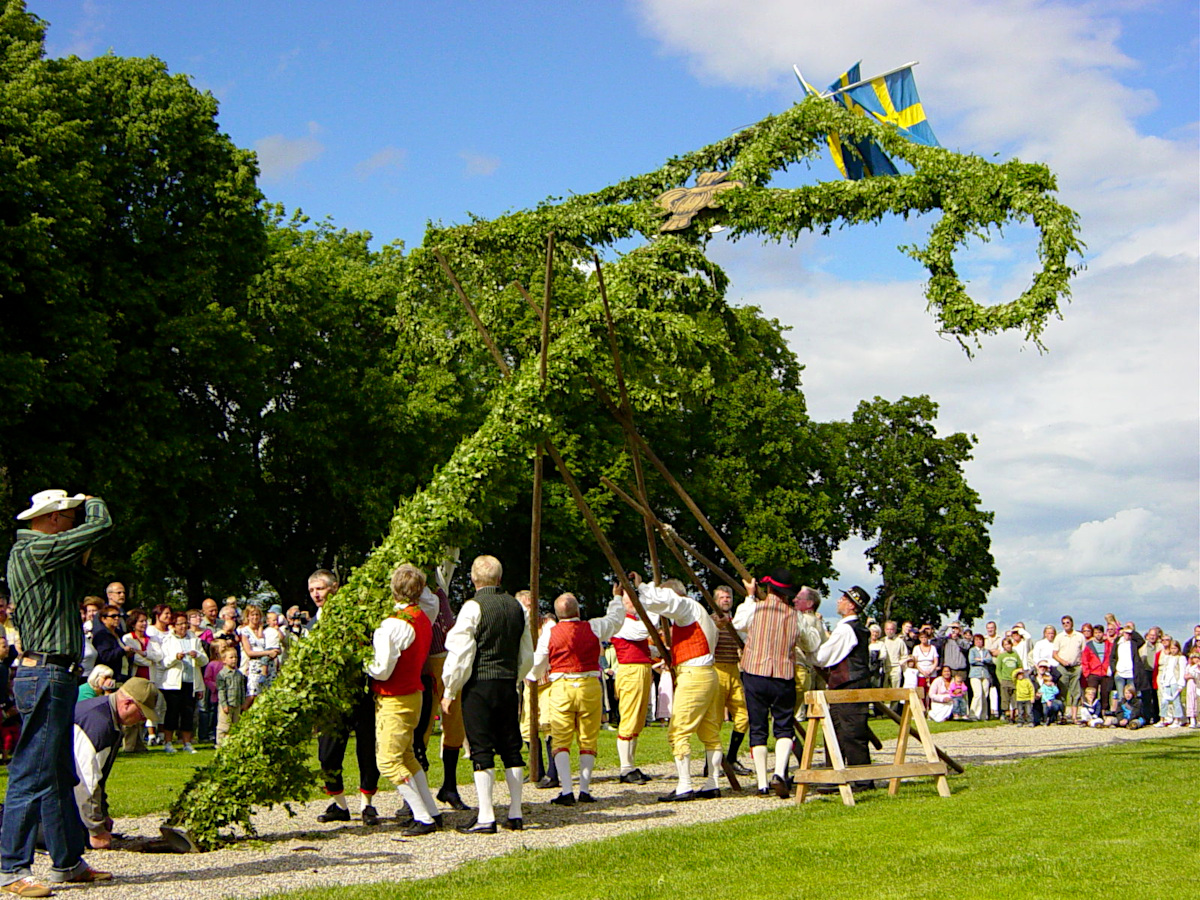
Midsummer celebrations at Sundbyholm Castle, raising the Majpole
I guess the most important celebration during the year is "Midsommar" or Midsummer in English. This holiday is probably more important in Sweden than Christmas celebrations. During Midsummer family and friends all gather to celebrate together. The afternoon of Midsummer’s Eve calls for dancing around a large pole decorated in branches and flowers, and the evening is reserved for eating and celebrating with friends. We eat pickled herring, paired with a glass of aquavit. Salmon is on the menu, either cured, or smoked, lots of seasonal and local foods, and a dessert involving strawberries! And of course singing songs during dinner :-)
Like "Valborgmässoafton" part of the celebrations happen at the Sundbyholm Castle, and everyone is welcome. Traditionally woman and girls are wearing flower wreath in their hair (although not that many do so anymore). At the castle you can see the Majpole being raised, and you can join in with the dancing around the Majpole. And really, everyone does join in the dancing, young and old alike; all knowing the dance steps to the songs. And yes, you will be surprised seeing adults dancing to a song called "Små grodorna" (Swedish for "The Little Frogs"). I still am surprised seeing this dance, even after all these years in Sweden ;-) The dance involves movements that illustrate body parts that frogs lack, namely "ears" and "tails", very funny to watch :-)
Midsummer is celebrated on the Friday of the week of the summer solstice, somewhere between June 19 and June 25.
Like in Norway and Finland, it is believed that if a girl picks 7 different flowers in silence of the midsummer night and puts them underneath her pillow, she will dream of her future husband.
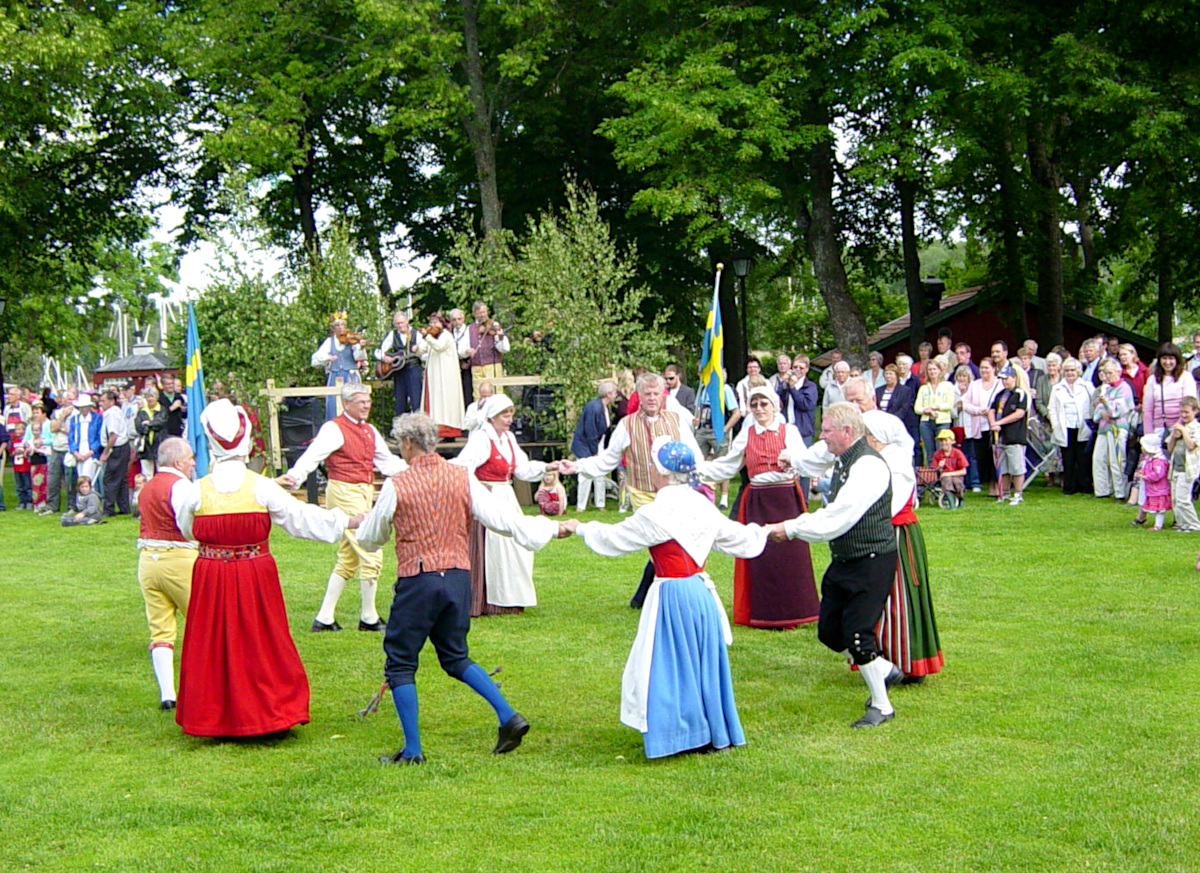
Traditional dancing at the Midsummer celebrations
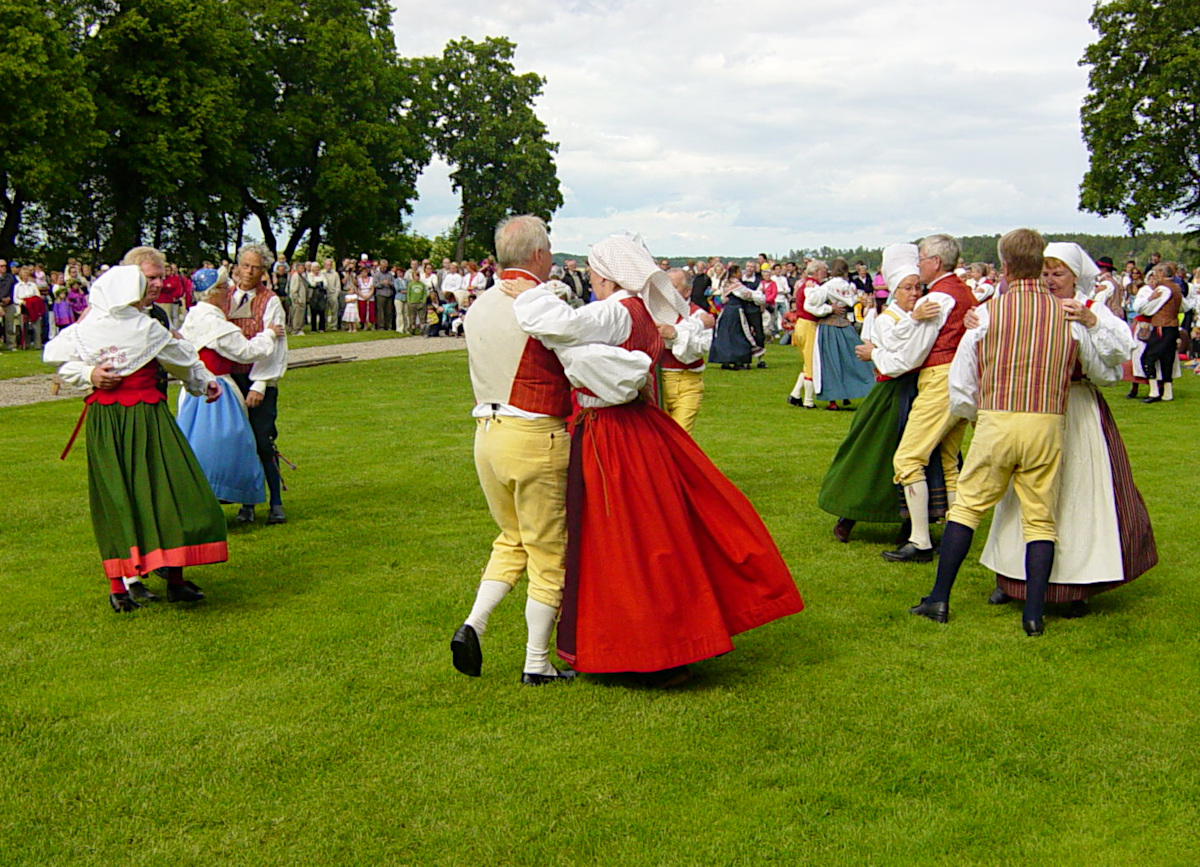

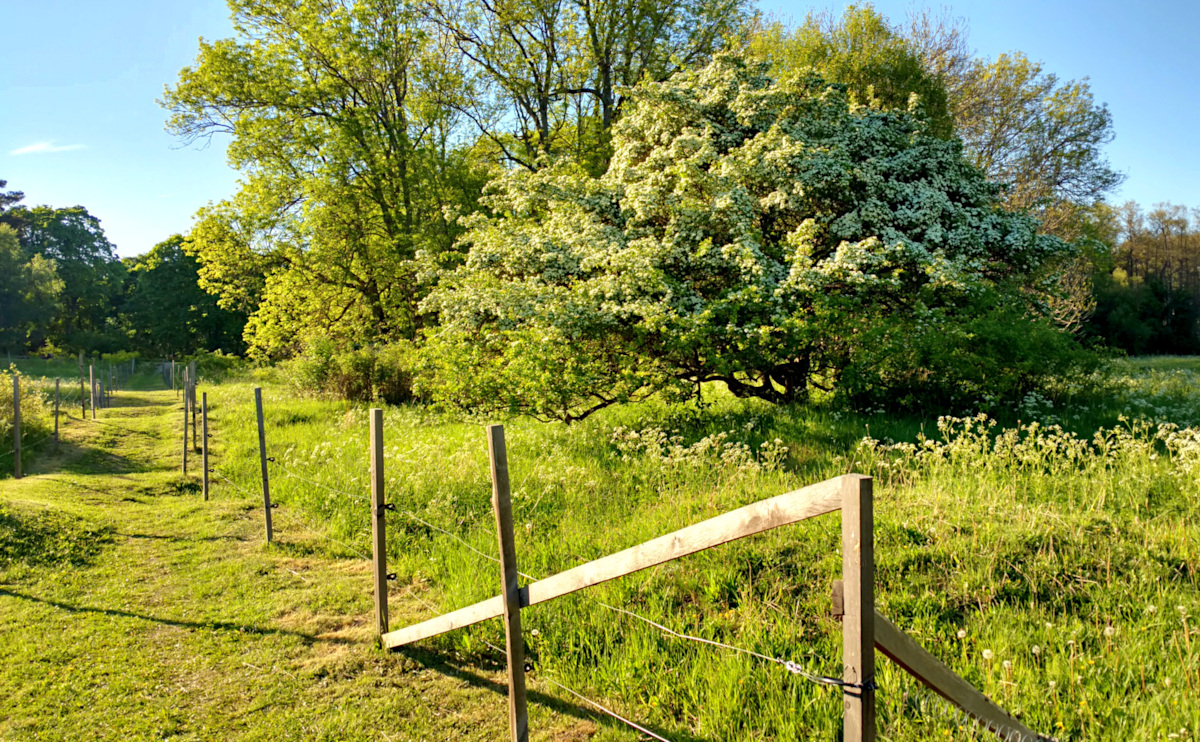
Walking trail through the pastures in the nature reserve
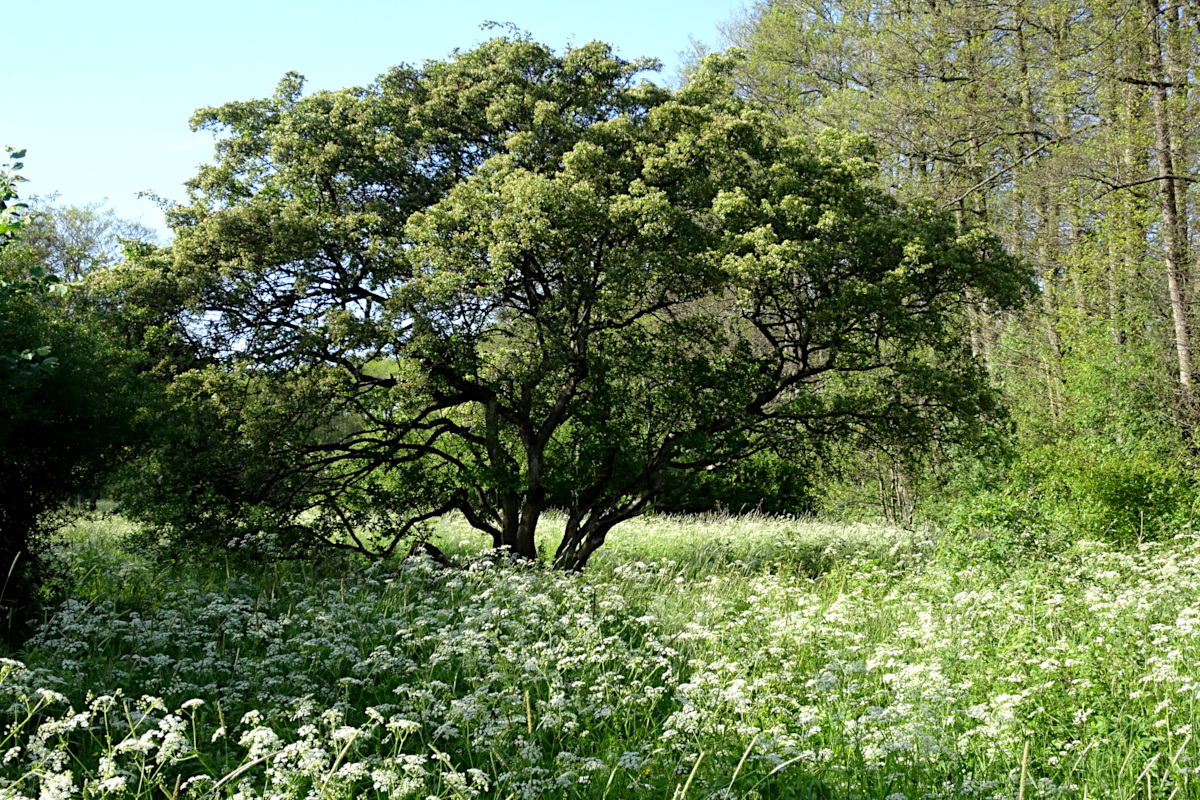
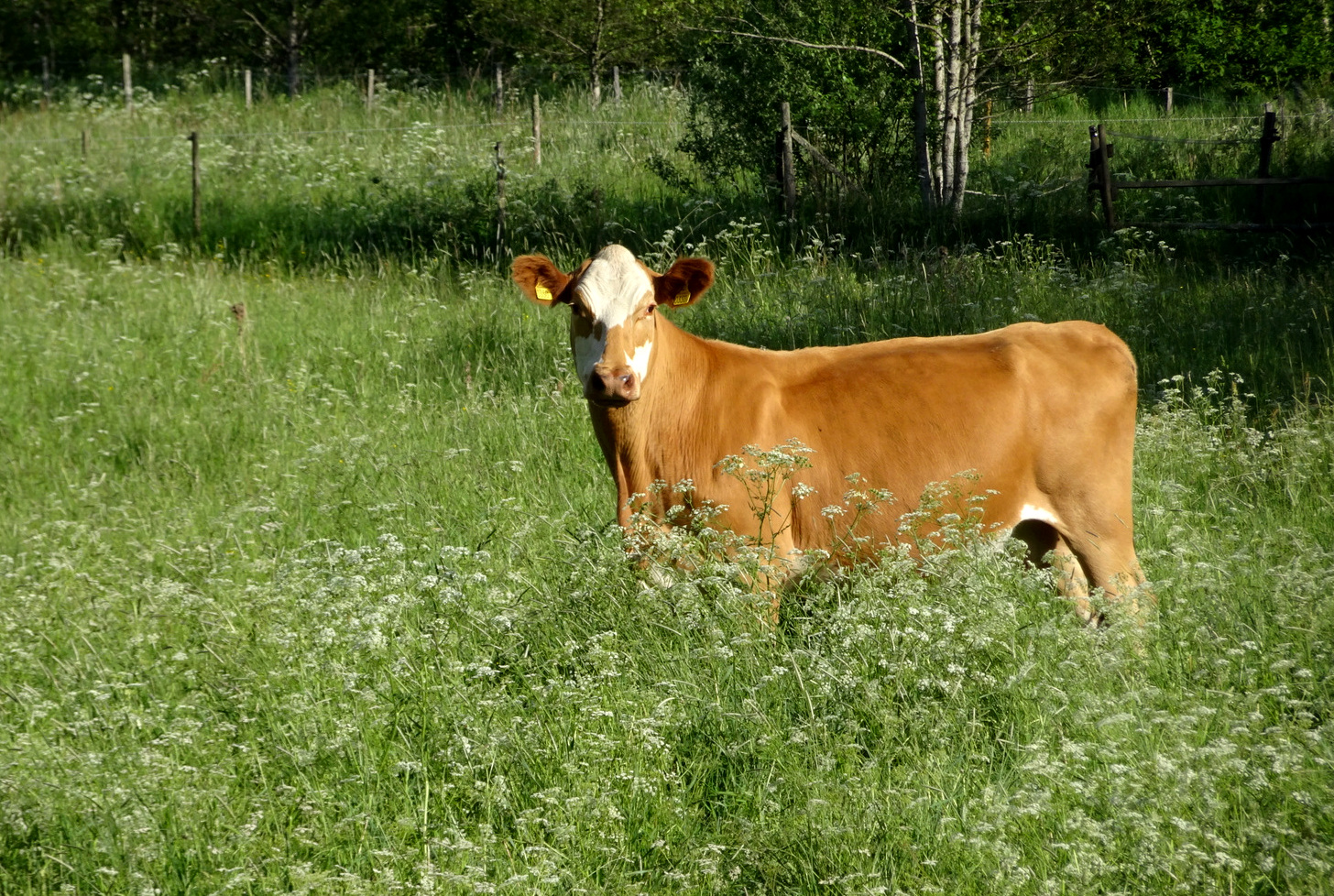
Curious cow in the nature reserve
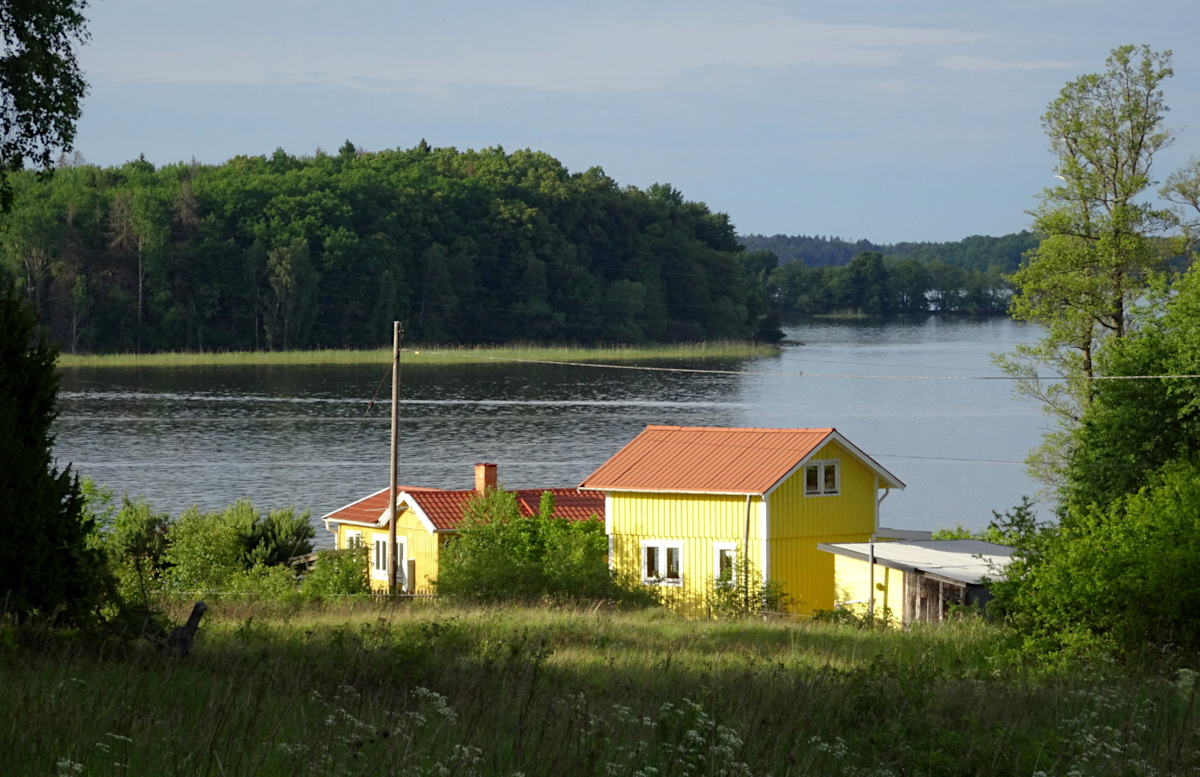
During summer we often venture further out along the shores of Lake Mälaren
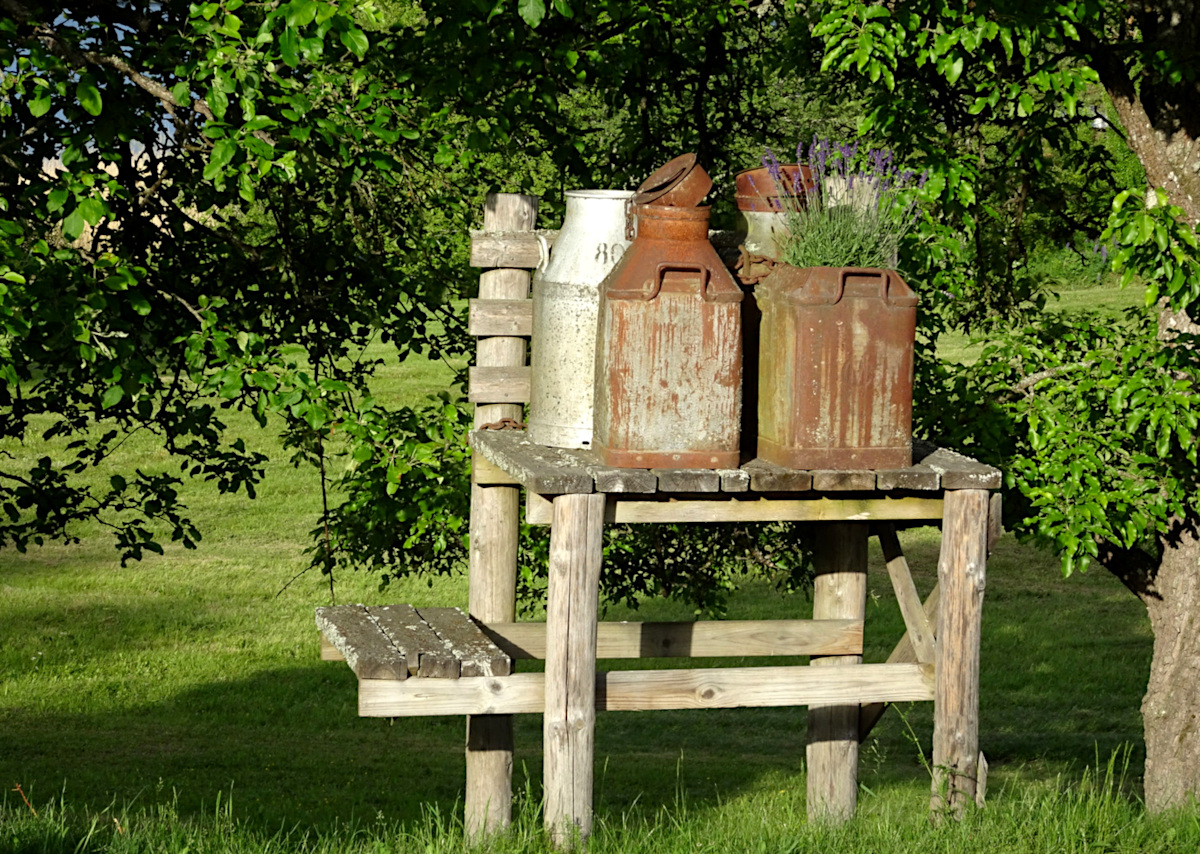
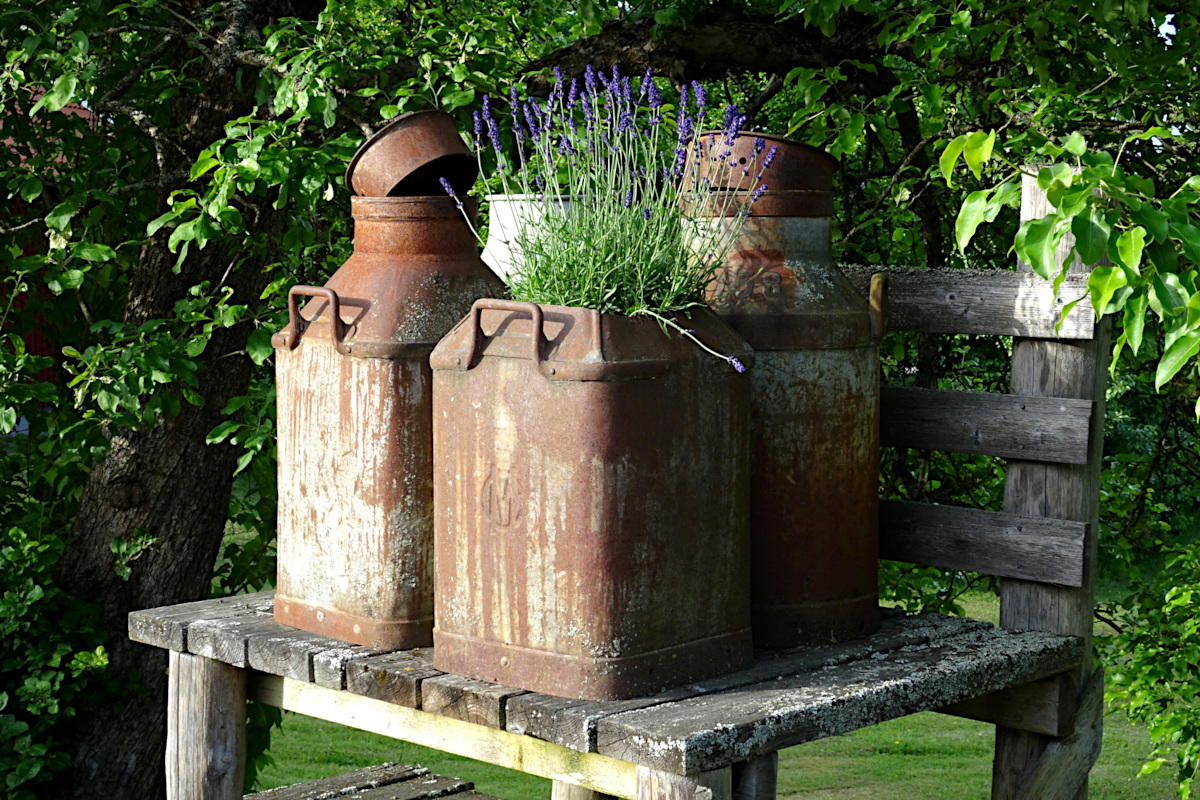
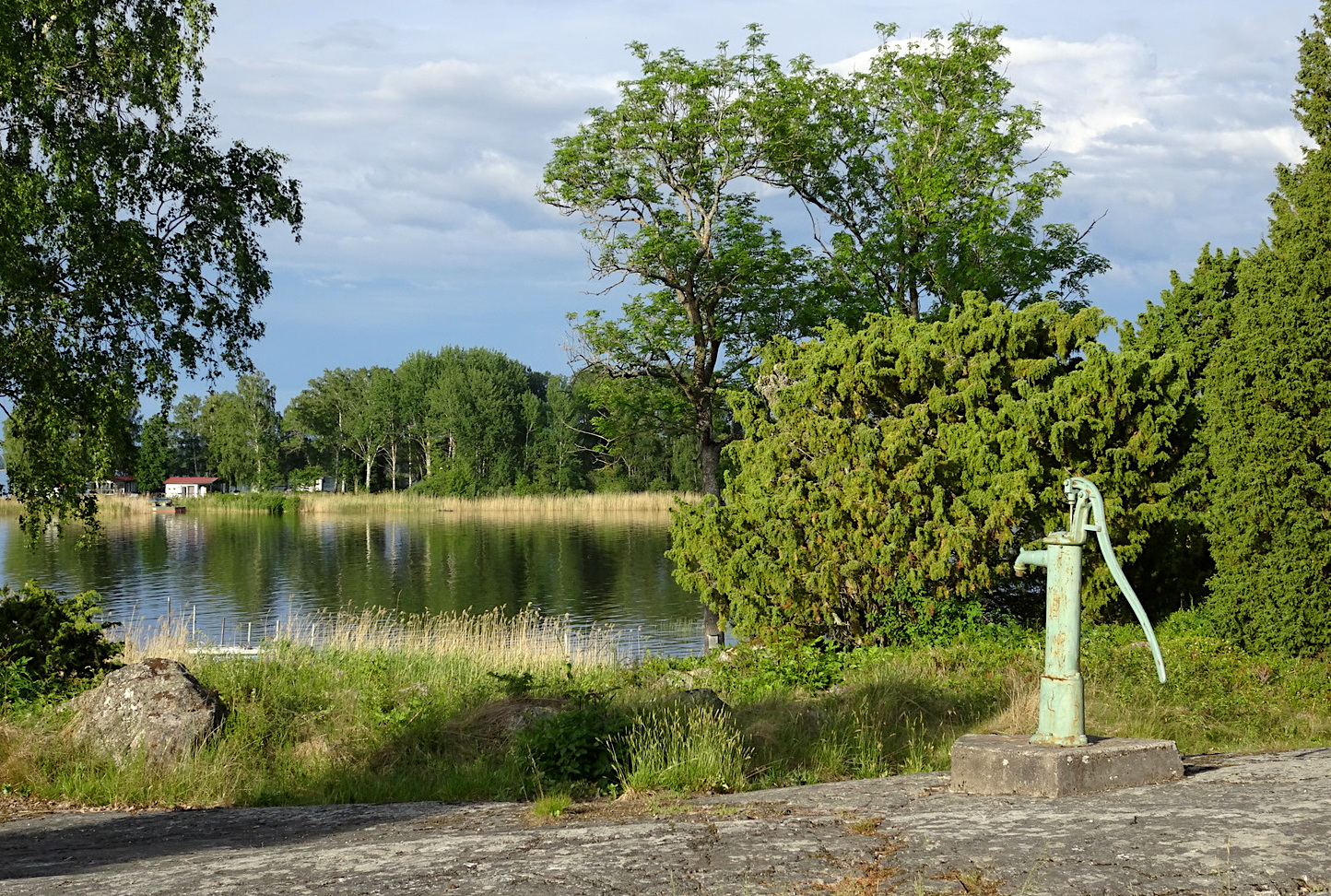
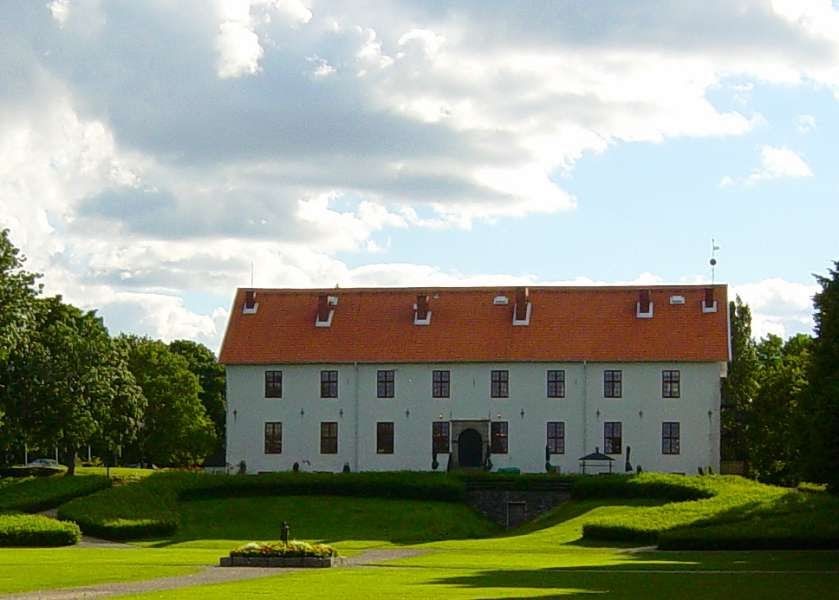
Sundbyholm Castle
Prins Eugén painting Sundbyholm Slott
Call me old-fashioned if you like, but for me a castle is more like a fortified building, or a a house with lots of turrets and the like. But none of this is the case with Sundbyholm Castle. As you can see it is a relatively plain building (photo above), however big in size. Now it is in use as a hotel and restaurrant.
The history of this castle dates back to the Middle ages, when a monastery was located on the site owned by Eskilstuna's Johannite monasteries. After the Reformation in 1527, the monastery was withdrawn to the crown and became a royal estate.
The next important date is 1615, when Carl Carlsson Gyllenhielm married with Christina Ribbing, and Christina was given Sundbyholm as a gift by her new husband. Interesting fact is that Carl Carlsson Gyllenhielm was an illegitimate son of king Karl IX. Carl started building what is now called Sundbyholm Castle (1639-1648). But after a fire in 1674, the then owner, Governor Carl Bååt, built a third floor. And looking at a drawing from that time (Sueciaverket), the castle looks far more castle-like in its appearance than it does nowadays.
Unfortunately, a hundred years later, there was another fire. It was on the day before Christmas Eve 1774, when the castle was ravaged by a violent fire as the new tarred roof was ignited by sparks from one of the chimneys. Everything burnable inside the castle was destroyed and some of the walls collapsed. It was decided that it would be rebuilt. But when there was no money, it became a warehouse and shed instead; and so it stood for a long time. This is also the time that Prince Eugene's painted the castle (1893), a painting which he calls "The Old Castle" (photo right is the statue of Price Eugene painting the castle).
In 1939, the town of Eskilstuna bought the old dilapidated royal estate, and after doing historical investigations, it was rebuilt in 1952-1953.
May: the boats are back in the Sundbyholm Marina
Sundbyholm
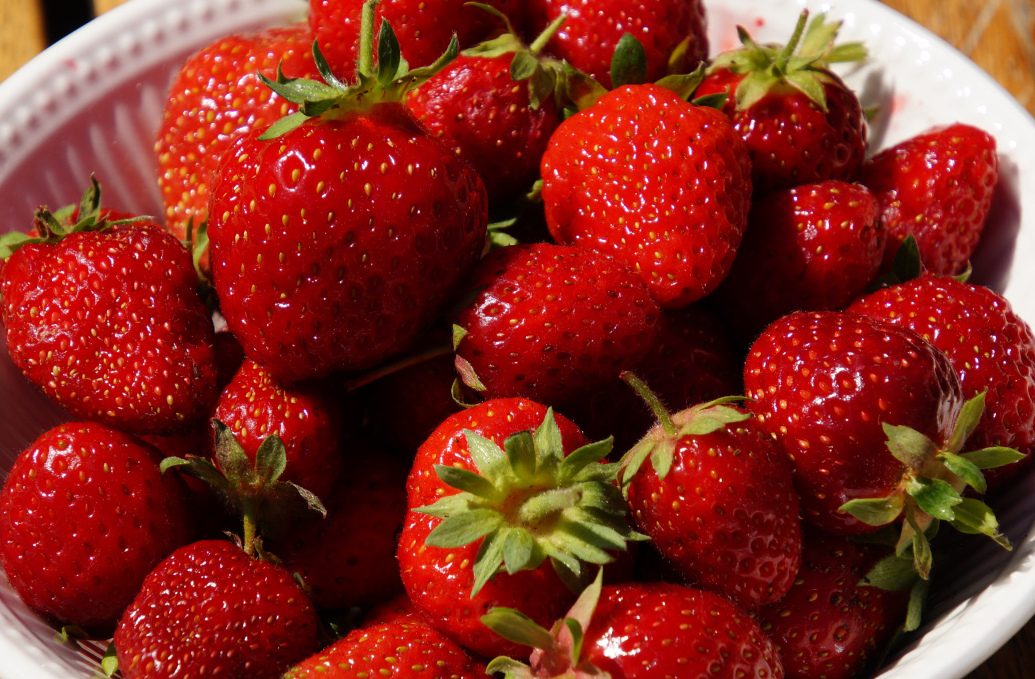
No Swedish summer is complete without fresh picked strawberries! These are some freshly picked strawberries from my own garden, deliciously sweet, and still warm from the summer sun :-)
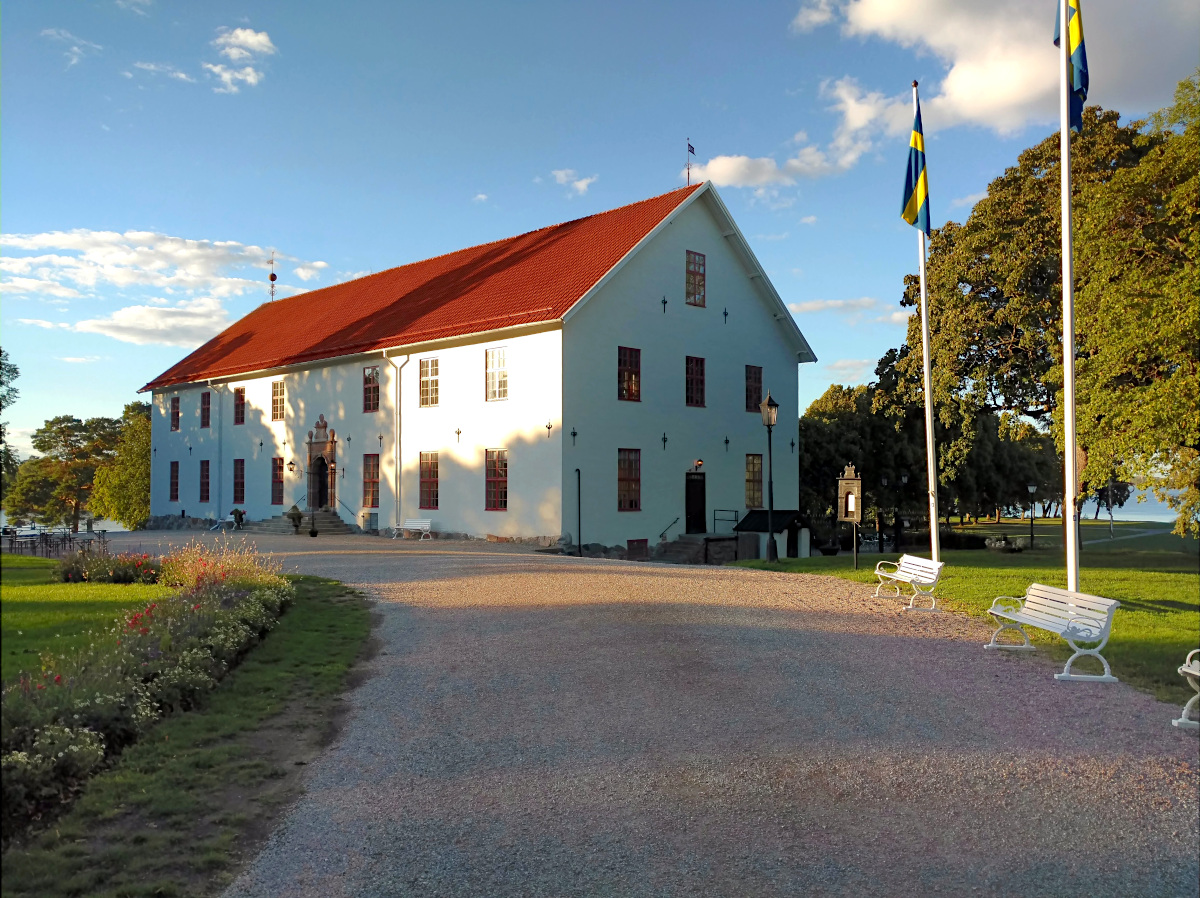
Sundbyholm Castle
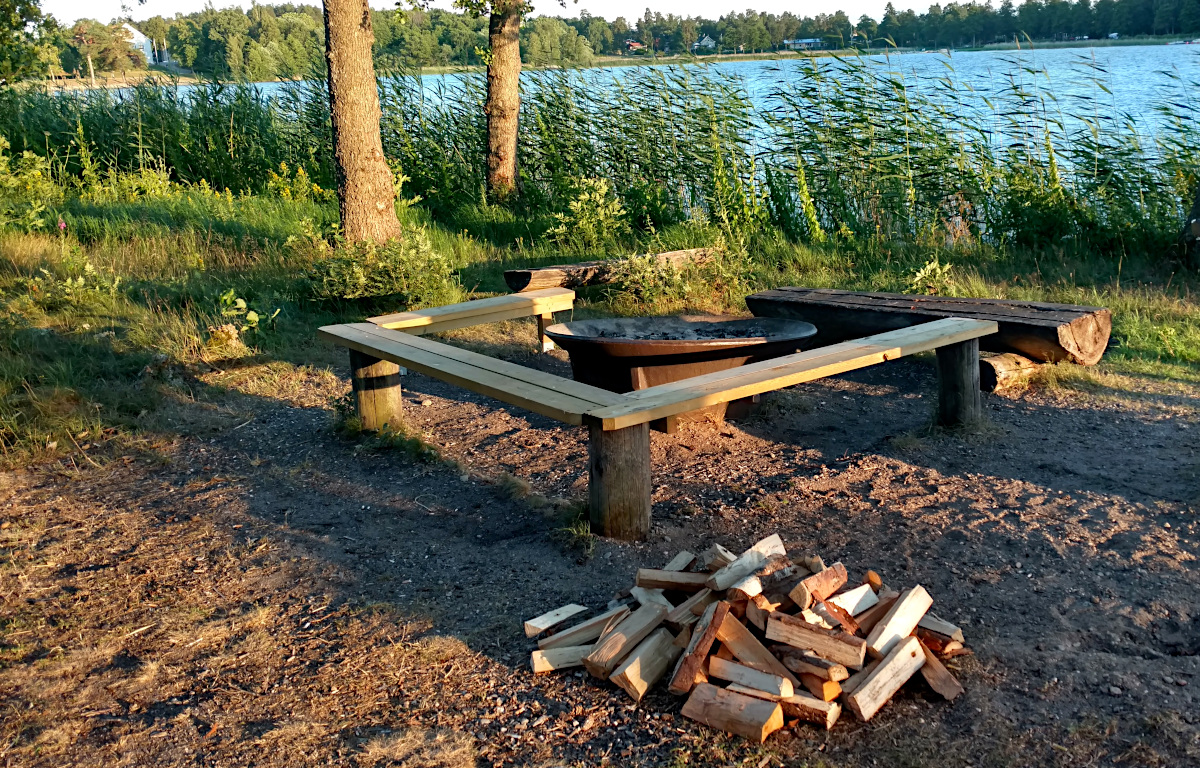
Time for some barbeque!
Did you bring your picnic basket with you? Because you should! The perfect end of a day is to have a nice barbeque close to the Sundbyholm Castle. Here you have a headland where there are several barbeque areas available. I am not sure about the total number, but it should be around 6 of them (plus an additional one at the little cottage "Tegelslagarstugan" that I showed you earlier on).
It is on a first come basis, so don't come too late, as these spots right at the waters edge are popular. It doesn't cost anything to use the firepits, and the most amazing part: there is firewood ready for use right at the firepit, also for free. Do respect the system however, take care of your garbage afterwards and tidy the spot when you leave :-)
Once in a while I include the short walk to the headland on my regular walks in the area. And there are always some people having a barbeque here, no matter what time of the year it is. Even in mid winter, when there is ice on the lake! In winter, after enjoying an hour or two walking or skating on the lake, people gather at the firepits to start a barbeque. And I guess, to warm up their hands and body a bit against the cold.
Sunset over Lake Mälaren
In early summer, you can be treated on some gorgeous sunsets over Lake Mälaren, like in the photo above. This photo was taken in the very beginning of June, when there are often warmer days (all is relative, and for Sweden this 20+C is considered nice and warm), and darkness falls late evening.

I cannot write a page about Sundbyholm without mentioning the Sigurdsristningen. The Sigurdsristning is a special place with a lot of history. You can see it on the side of a quiet road, somewhere in between the trees. A little sign tells you where it is. And when you climb up the hillside you will see a huge rock with carved pictures surrounded by runic inscriptions. But what you feel is history, and lots of it. I find it an amazing place. It feels special to be here, where so many centuries ago someone was telling a story of a distinguished Viking family, by making these carvings in these rocks.
It's an important historic place, dating back to the 11th century. But it is unprotected, it is just 'there' in the woods. And maybe that makes it even more special.
Fafnir the snake, Sigurdsrisningen
I made a separate page about Sigurdsristningen, where you can see many more images and read much more about its history
Well, I hope you enjoyed reading a bit about the part of the world I call my home! Without a doubt this page will evolve and be updated more in future, as it was real fun writing it, and it has actually inspired me to take my camera with me more often on my walks in future :-)
Simone & Åke, Sundbyholm, Sweden

It would be great to hear from you!
You can reach me by sending me an Email.
Or leave a comment / reaction in the box below.
You can also follow me on Facebook: Sim1 around the World Blog
:-) Simone